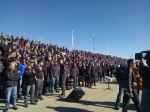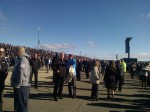AIRWORTHINESS LIMITATIONS: A section of the Instructions for Continued Airworthiness that contains each mandatory replacement time, structural inspection interval, and related structural inspection task. This section may also be used to define a threshold for the fatigue related inspections and the need to control corrosion to Level 1 or better. The information contained in the Airworthiness Limitations section may be changed to reflect service and/or test experience or new analysis methods.
- AD – Airworthiness Directive: An airworthiness directive a notification to owners and operators of certified aircraft that a known safety deficiency with a particular model of aircraft, engine, avionics or other system exists and must be corrected.
- ALI – Airworthiness Limitations Instructions
- AWLs – Airworthiness Limitations
TP 13850 – Scheduled Maintenance Instruction Development Process Manual
https://www.tc.gc.ca/eng/civilaviation/publications/tp13850-menu-277.htm
Basic Maintenance Program
Maintenance Steering Group (MSG) Processes – In 1968 the Maintenance Steering Group (MSG) was created with a mandate to formulate a decision logic process used for development of the initial scheduled maintenance requirements for new aircraft. The group was composed of participants from various aviation bodies, including the Air Transport Association (ATA), airlines, aircraft manufacturers, suppliers, and FAA representatives. That same year representatives of the steering group developed “MSG-1 – Maintenance Evaluation and Program Development”, which for the first time used a decision-logic diagram to develop the scheduled maintenance program for the new Boeing 747 aircraft. Both hard-time and on-condition processes were used for development of the aircraft’s routine maintenance tasks.
In 1970, MSG-1 is updated to MSG-2 to make it applicable for later generation aircraft (L-1011 and DC-10), and at the same time the methodology introduces a third primary maintenance process defined as Condition-Monitoring (CM).
Under Condition-Monitoring no services or inspections are scheduled to determine integrity or serviceability, however the mechanical performance is monitored and analyzed. For example, a given operating characteristic of the equipment (e.g. vibration, oil consumption, EGT margin deterioration, etc) is trended and compared with known “normal” operating levels. An acceptable range is established with either upper and/or lower limits, or some maximum or minimum level. As long as the trend data remain inside the acceptable level, any variation is considered to be normal. When the trend line intersects the “unacceptable” limit, removal of the unit is required to prevent a failure in the future. A characteristic of CM is that it is not considered a preventive maintenance process; the process allows failures to occur, and the failure modes of conditioned-monitored items are considered not to have a direct adverse effect on operating safety.
MSG-2 decision logic was subsequently used to develop scheduled maintenance programs for the aircraft of the 1970s. Maintenance tasks were derived from one of three processes: 1.) HardTime, 2.) On-Condition, and 3.) Condition Monitoring or some combination of the three processes



















